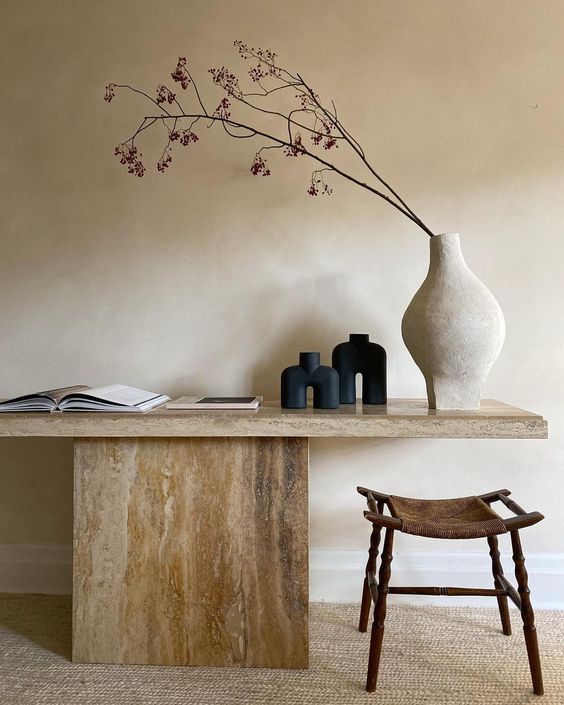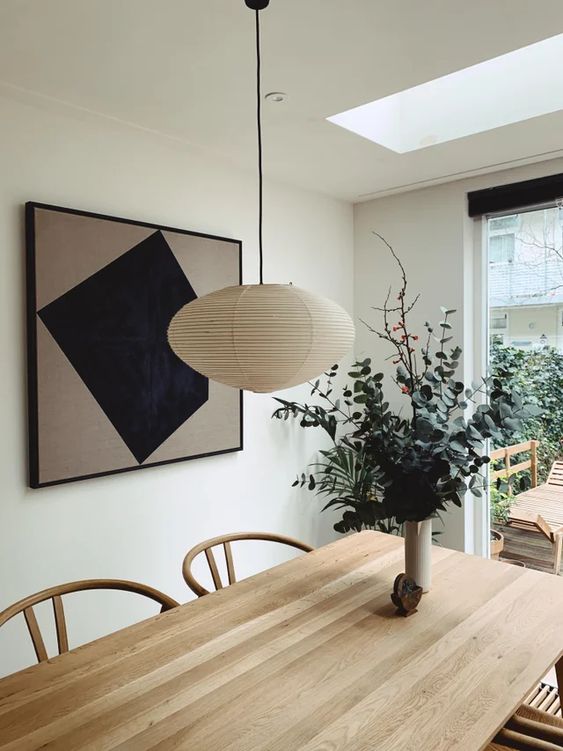2020 made us all rethink of what is actually the most important thing in life for us, so the vast majority turned more or less voluntarily to nature during the lockdown. As a result of spending a large amount of time in our own 4 walls, we all aspired to bring a sense of nature into the interior spaces. Gravity towards natural materials, natural relaxing colours, not overcrowded spaces has resulted in the strengthening of Japandi as a trend in the last year.
So what is Japandi?
Well, simply said Japandi is a hybrid of Japanese and Scandinavian style, which is becoming more and more dominant in the trends of home decoration month by month. Purely figuratively speaking, if the Japanese and Scandinavian style of interior design had a child, it would then be Japandi. Below we will explain in detail what Japandi is and what its characteristics are.

What are the main principles and rules of Japandi?
Japandi has many points of contact with the minimalist style of interior design. One of them, and we can say the most important or initial feature is de-cluttered space. Everything starts with decluttering because the rooms decorated according to Japandi rules are stylized with carefully selected pieces of furniture and/or decorations, there are no unnecessary things. The next characteristic are natural colours, materials, clear and simple lines that are used throughout the space and there is a great tendency that everything in the space is produced in an environmentally friendly and sustainable way. We must not forget about light and its sources, which play a very big role in the Japandi style. What designers want to achieve with Japandi is a similar feeling as with the Scandinavian style, the so-called Hygge, where human being is in focus and everything around him must be comfortable and subordinated to positive emotions. But more about each individual aspect of Japandi and what you need to pay attention to if you want to decorate your home in this style follows below.
“People and nature are the centre in Japandi design.”
Before you start any planning, start buying furniture and decorations, choosing colours for the walls, etc., reduce the amount of things in your home. Things that are torn, no longer work, or do not give you pleasure must go out. De-clutter, de-clutter, de-clutter is your starting point.
“The best way to find out what we really need is to get rid of what we don’t.”
Marie Kondo
The next thing you have to do is choosing your colour palette. Regardless of style, choosing your colour palette is the first task on your to do list in the planning phase and with Japandi there is no difference. We do not necessarily mean only the paint colours for the walls, but the colours of fabrics, wood (furniture and floors), light sources, decorations, etc., so let’s start.
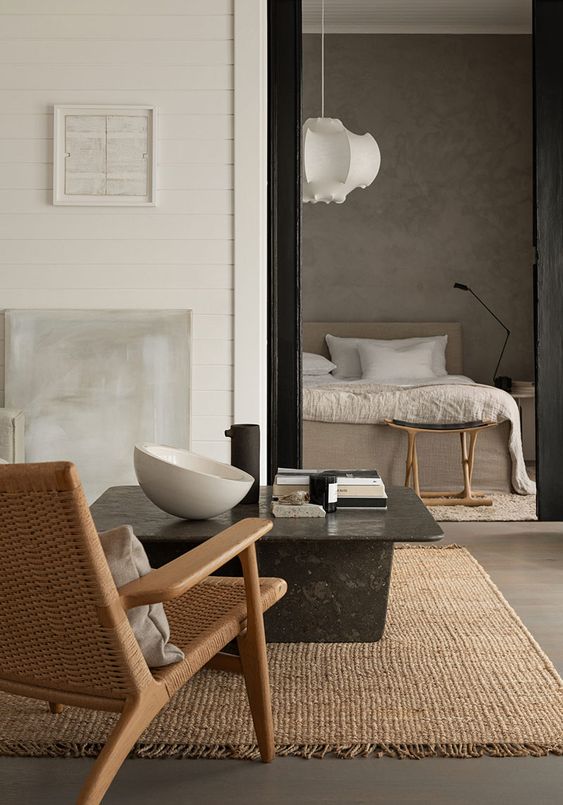
Colours
For Japandi are characteristic neutral colours such as white, beige, brown, green. When you will be choosing colours for the walls, be focused that the colours, with which you will paint the interior of your home, are as similar as possible to the colours we find in nature. Even though you may have thought at first that natural colours are boring and don’t give you a lot of room to play, you’re wrong. Remember white is not always white, because there are over 20 different shades of that colour and they additionally depend on the manufacturer who has its own variants, for example white champagne, therefore you have plenty of white or any other colour to choose.
Materials and textures/fabrics:
Natural materials like wood and especially bamboo are unavoidable in the Japandi style. If you opt for another type of wood, experts and Capsule Home Team would recommend you to use wood that is in a lighter colour and that its processing remain as natural as possible. What we would also advise you is to stay in the same tone if you want to use several different types of wood. The reason behind it is to avoid the feeling of chaos in the space resulting from using 3 different types of wood whose tones go from warm to cold. As for the fabrics, they should be made of natural materials in neutral colours and for textures it is desirable that they be warm and as little processed as possible. This will satisfy the ecological aspect which is also very important when decorating a home in the Japandi style.
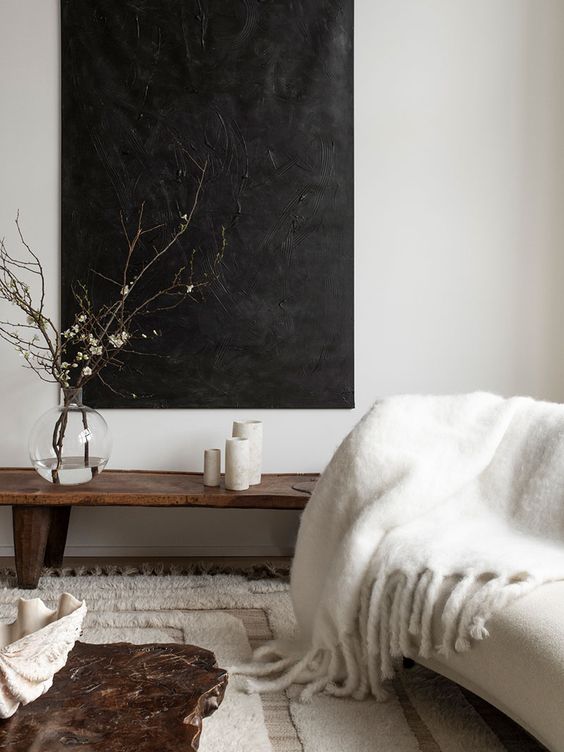
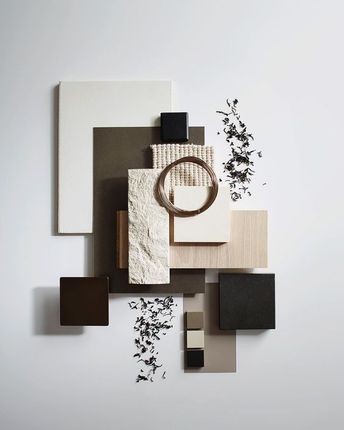
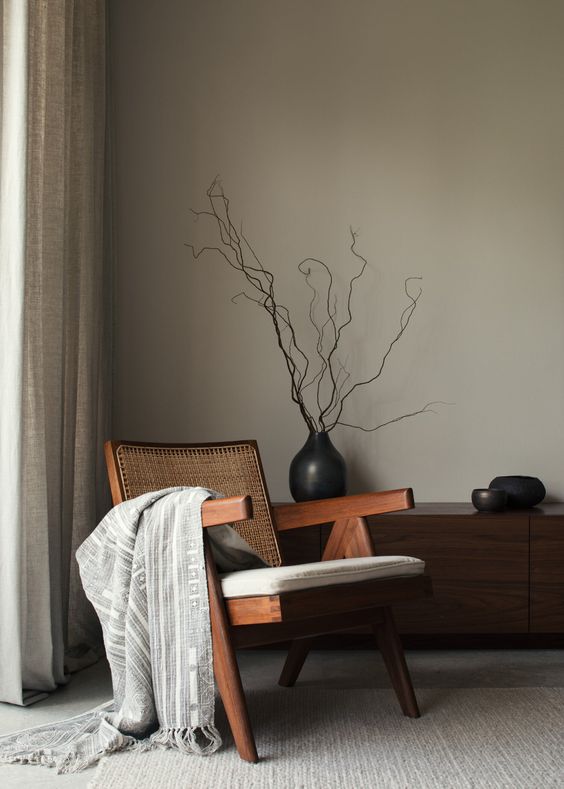
Patterns and Contrasts:
At this point, you are probably confused as it is contradictory to you that patterns can be used in a minimalist home. We agree with you in case you have imagined a home where each of the rooms has its own pattern with strong colours dominating. However, by “you should use patterns”, we mean neutral patterns (e.g. abstract wave waves or geometric shapes) that are visible in nature and which you can combine in space with a picture or pillow with neutral pattern. As for the contrast, you can achieve it by choosing perhaps an accent wall that you will repaint with a different color to attract the visitor’s eye in that direction. Another way you can achieve contrast is to choose a contrasting piece of furniture and it can be something big like a chest of drawers, a sofa or a smaller decorative element like a vase for candles, a candlestick or a blanket. This will also satisfy the rule in Japandi that you must have one ore two statement pieces in the room, so there you go, two flies with one blow.
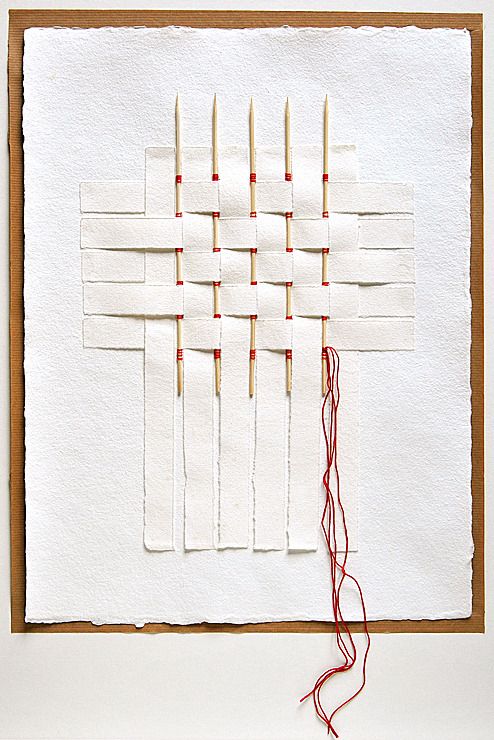
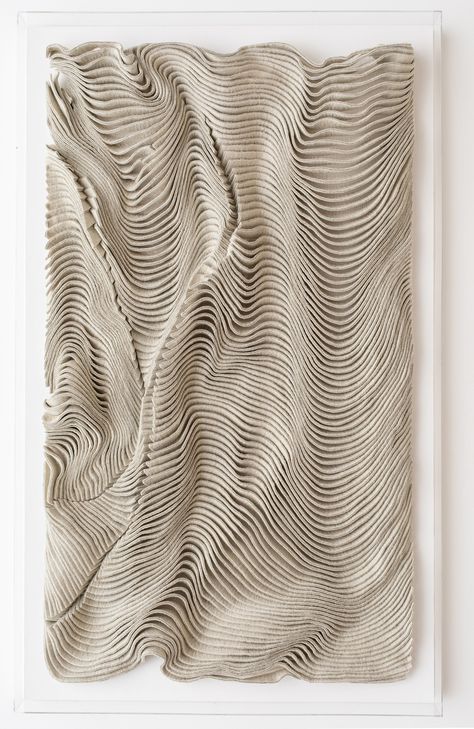
Plants:
We do not have to explain much in this category because we have already said in the definition at the very beginning that nature and people are placed in focus when arranging a home in Japandi style. So any plant will bring life and a sense of nature into the home.
Light:
In Japandi are warm preferably natural light sources recommended. If you are limited in your home with light sources, there are a handful of light bulbs on the market that have a warm spectrum which will mimic the natural light. The second solution are candles, a wonderful and inexpensive option.
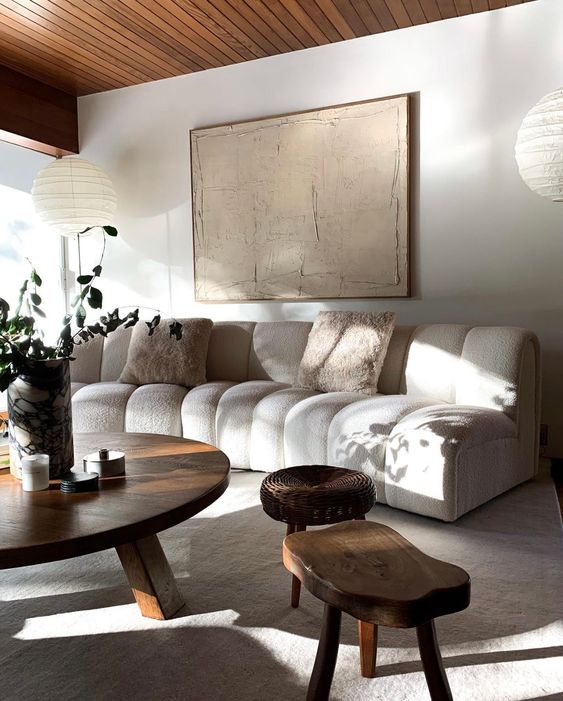
With lights we came to an end with the characteristics of Japandi. What we would like you to realise after reading this blog post is that Japandi, like Scandi, is a lifestyle that has become a trend. The point of Japandi or any other style, is not to replace it with some other trend in the near future, because with that the eco and sustainable aspect of Japandi falls into the water. If you can really imagine slowing down your lifestyle, making it more mindful and in tune with nature and making it calmer and happier, then there is no better style for you than the Japandi.
For those of you who think that Japandi meets your aesthetic and functional criteria, below you can see the moodboard we have prepared for you with products that will give your home a touch of freshness and that will enrich it with natural materials and thus bring the necessary peace to the space.

1/ Poster, 2/ Pendant Lamp, 3/ Basket, 4/ Armchair, 5/ Vase, 6/ Cushion, 7/ Cushion Cover, 8/ Coffee Table, 9/ Sofa , 10/ Candles, 11/ Vase, 12/ Candle Holder, 13/ Sideboard, 14/ Plant Pot, 15/ Poster
We would like to know what are your thoughts on Japandi, does this style resonate with you and could you imagine yourself living in a home decorated in this style? Write us your thoughts in the comment section below 🙂
Until next reading,
xoxo Capsule Home Team
Picture Credit: Pinterest
Mood board: Capsule-Home Team
